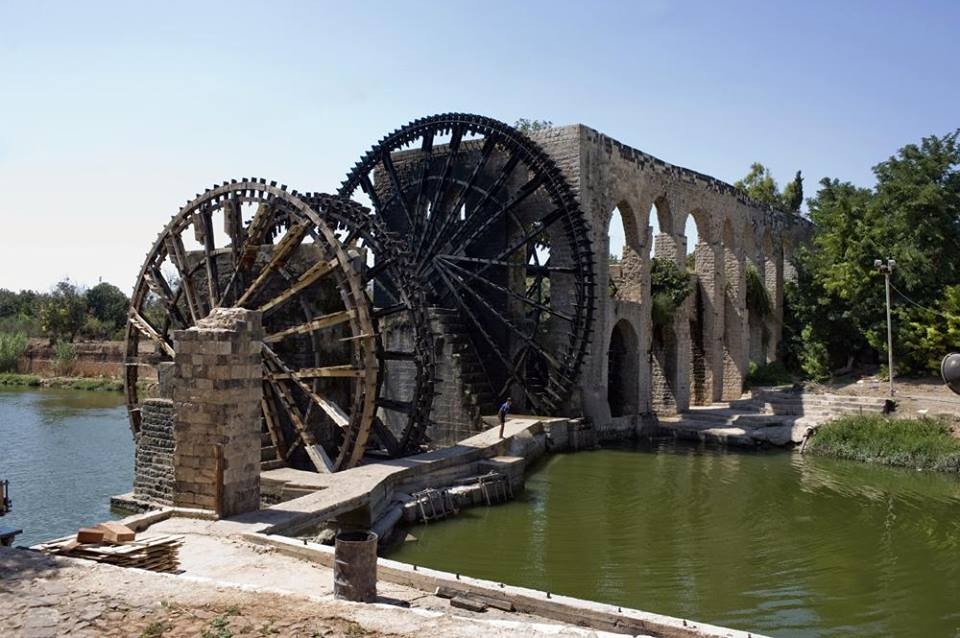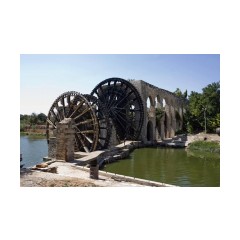The Norias of Hama are a number of norias("wheels of pots") along the Orontes River in the city of Hama, Syria. Only seventeen of the original norias remain. They are mostly unused now and serve an aesthetic purpose. They were called "the most splendid norias ever constructed". The norias of Hama were submitted as a tentative World Heritage Site by the Syrian Arab Republic in June 1999.
The earliest evidence for norias in Hama suggests they were developed during the Byzantine era, although none of the norias in Hama today precede the Ayyubid period. However, a mosaic found at Apamea dating to 469 pictures a noria similar to those at Hama, suggesting they may have earlier origins. The surviving norias date back to the medieval Islamic period, when norias as large as 20 meters in diameter were built, with 120 water collection compartments and capable of raising more than 95 litres of water per minute. Now only 17 norias remain, unused.





